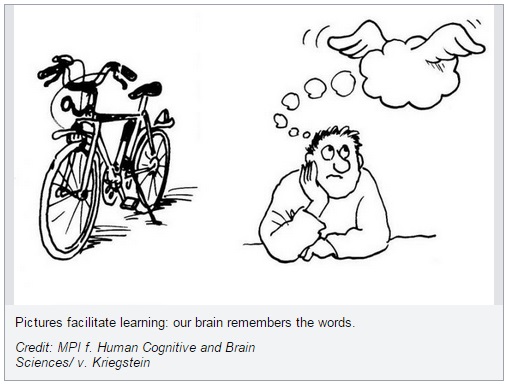Movement, Images Facilitate Vocabulary Learning
[Source: Science Daily]

“Atesi” — what sounds like a word from the Elven language of Lord of the Rings is actually a Vimmish word meaning “thought.” Scientists from the Max Planck Institute for Human Cognitive and Brain Sciences in Leipzig have used Vimmish, an artificial language specifically developed for scientific research, to study how people can best memorise foreign-language terms. According to the researchers, it is easier to learn vocabulary if the brain can link a given word with different sensory perceptions. The motor system in the brain appears to be especially important: When someone not only hears vocabulary in a foreign language, but expresses it using gestures, they will be more likely to remember it. Also helpful, although to a slightly lesser extent, is learning with images that correspond to the word. Learning methods that involve several senses, and in particular those that use gestures, are therefore superior to those based only on listening or reading.
For most students, the very thought of learning new vocabulary evokes a groan. Rote learning of long lists of words must surely be one of the most unpopular types of schoolwork. That said, many schools and language courses have now understood that learning outcomes improve if vocabulary, for example, is presented not just as a word, but also as an image. The multisensory learning theory states that the brain learns more easily when several senses are stimulated in parallel.
Read the Rest of this Article on Science Daily
PediaStaff is Hiring!
All JobsPediaStaff hires pediatric and school-based professionals nationwide for contract assignments of 2 to 12 months. We also help clinics, hospitals, schools, and home health agencies to find and hire these professionals directly. We work with Speech-Language Pathologists, Occupational and Physical Therapists, School Psychologists, and others in pediatric therapy and education.
